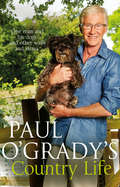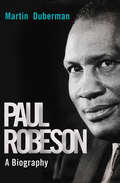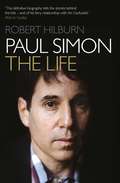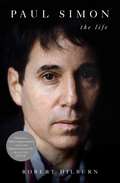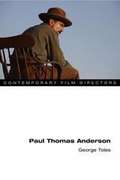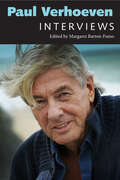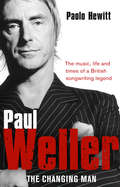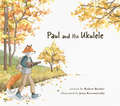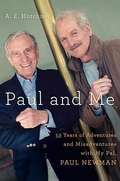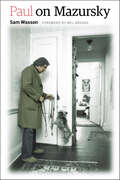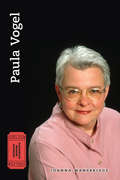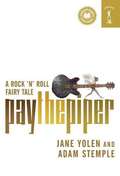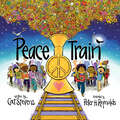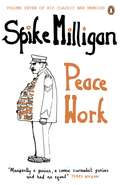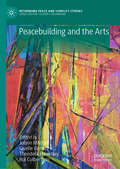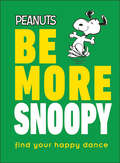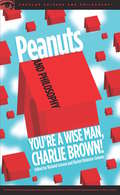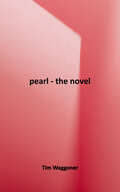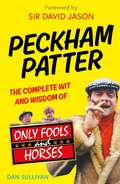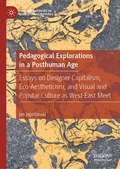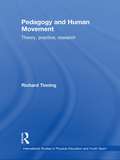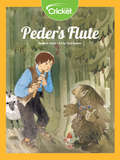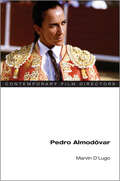- Table View
- List View
Paul O'Grady's Country Life: Heart-warming and hilarious tales from Paul
by Paul O'GradyTHE SUNDAY TIMES BESTSELLERA fascinating and hilarious glimpse into Paul's life at home in the country with his animalsPaul O'Grady's Country Life for the first time gives a glimpse into the home life of one of Britain’s best loved stars, alongside the animals he adores. Sometimes rural idyll, sometimes hell on earth, Paul’s life in rural Kent has been shared over the years with some very vocal pigs, a mad cow, various rescued barn owls, the world’s most sadistic geese and Christine the psychotic sheep – among many other animal waifs and strays. And of course Paul tells the stories of the dogs in his life – including the tiny chihuahua/Jack Russell cross with Napoleonic ambitions, Eddie, Miss Olga, Bullseye, Louis, Boycie and, of course, Buster, the greatest canine star since Lassie. In addition, Paul shares some of his favourite recipes, explores country lore and superstitions, and extols the benefits of growing your own vegetables, herbs and fruit.This is a warts-and-all account of country living, as far removed from the bright lights of celebrity as you could ever imagine. The trials and tribulations Paul experienced on moving to deepest darkest Kent as a dyed-in-the-wool city dweller are every bit as hilarious and eventful as you would think. He had a lot of new skills to learn, and fast: everything from how to churn your own butter and how to birth a lamb to the best way to lure a cow out of your kitchen while naked from the waist down.Brilliantly funny and full of classic stories, Paul O’Grady’s Country Life is your armchair guide to the wonders and horrors of rural existence._____________________________Readers love Paul O’Grady’s Country Life:***** ‘This book is excellent. It will make you laugh out loud and it will make you cry.’***** ‘Delightful read. An insight into Paul O’Gradys country life, told in his true fashion. Couldn’t put it down!’***** ‘I think he has a gift of compassion for animals as well as people and it always shines through.’
Paul Robeson: A Biography (Lives Of The Left Ser.)
by Martin DubermanThe remarkable life of Paul Robeson, quintessential Harlem Renaissance man: scholar, all-American, actor, activist, and firebrandBorn the son of an ex-slave in New Jersey in 1898, Paul Robeson, endowed with multiple gifts, seemed destined for fame. In his youth, he was as tenacious in the classroom as he was on the football field. After graduating from Rutgers with high honors, he went on to earn a law degree at Columbia. Soon after, he began a stage and film career that made him one of the country&’s most celebrated figures.But it was not to last. Robeson became increasingly vocal about defending black civil rights and criticizing Western imperialism, and his radical views ran counter to the country&’s evermore conservative posture. During the McCarthy period, Robeson&’s passport was lifted, he was denounced as a traitor, and his career was destroyed. Yet he refused to bow. His powerful and tragic story is emblematic of the major themes of twentieth-century history.Martin Duberman&’s exhaustive biography is the result of years of research and interviews, and paints a portrait worthy of its incredible subject and his improbable story. Duberman uses primary documents to take us deep into Robeson&’s life, giving Robeson the due that he so richly deserves.
Paul Simon: The Life
by Robert Hilburn'There’s no tougher a mind, no more tender a voice than Paul Simon, and there’s no better man than Robert Hilburn to decipher the hardwiring of this hyperintellect...great songs can never be fully explained, but the great man on his way to find those songs surely can.' —Bono Through such hits as “The Sound of Silence,” “Bridge Over Troubled Water,” “Still Crazy After All These Years,” and “Graceland,” Paul Simon has spoken to us in songs for a half-century about alienation, doubt, survival, and faith in ways that have established him as one of the most honoured and beloved songwriters in American pop music history. Yet Simon has refused to talk to potential biographers and urged those close to him to also remain silent. But Simon not only agreed to talk to biographer Robert Hilburn for what has amounted to more than sixty hours, he also encouraged his family and friends to sit down for in-depth interviews. Paul Simon is a revealing account of the challenges and sacrifices of artistry at the highest level. He has also lived a roller-coaster life of extreme ups and downs. We not only learn Paul’s unrelenting drive to achieve artistry, but also the subsequent struggles to protect that artistry against distractions – fame, wealth, marriage, divorce, drugs, complacency, public rejection, self-doubt – that have frequently derailed pop stars and each of which he encountered. From dominating the charts with Art Garfunkel and a successful reinvention as a solo artist, to his multiple marriages and highly publicized second divorce from Carrie Fisher, this book covers all aspects of this American icon.'When it comes to writing songs, no one does it better than Paul Simon. Robert Hilburn’s is a wise and winning account of our most nimble, nuanced, and numinous poet-musician.' —Paul Muldoon'A tantalizing look into the mind and writing process of the man who is arguably the finest craftsman of the American popular song since the Gershwin brothers, this book will delight any Paul Simon fan or student of popular culture.' —Linda Ronstadt
Paul Simon: The Life
by Robert HilburnA publishing event from music legend Paul Simon: an intimate, candid, and definitive biography written with Simon’s full participation—but without his editorial control—by acclaimed biographer and music writer Robert Hilburn.For more than fifty years, Paul Simon has spoken to us in songs about alienation, doubt, resilience, and empathy in ways that have established him as one of the most beloved artists in American pop music history. Songs like “The Sound of Silence,” “Bridge Over Troubled Water,” “Still Crazy After All These Years,” and “Graceland” have moved beyond the sales charts and into our cultural consciousness. But Simon is a deeply private person who has resisted speaking to us outside of his music. He has said he will not write an autobiography or memoir, and he has refused to talk to previous biographers. Finally, Simon has opened up—for more than one hundred hours of interviews—to Robert Hilburn, whose biography of Johnny Cash was named by Michiko Kakutani of the New York Times as one of her ten favorite books of 2013. The result is a landmark book that will take its place as the defining biography of one of America’s greatest artists. It begins in Kew Gardens Hills, Queens, where, raised by a bandleader father and schoolteacher mother, Simon grew up with the twin passions of baseball and music. The latter took over at age twelve when he and schoolboy chum Art Garfunkel became infatuated with the alluring harmonies of doo-wop. Together, they became international icons, and then Simon went on to even greater artistic heights on his own. But beneath the surface of his storied five-decade career is a roller coaster of tumultuous personal and professional ups and downs. From his remarkable early success with Garfunkel to their painfully acrimonious split; from his massive early hits as a solo artist to the wrenching commercial failures of One-Trick Pony and Hearts and Bones; from the historic comeback success of Graceland and The Rhythm of the Saints to the star-crossed foray into theater with The Capeman and a late-career creative resurgence—his is a musical life unlike any other. Over the past three years, Hilburn has conducted in-depth interviews with scores of Paul Simon’s friends, family, colleagues, and others—including ex-wives Carrie Fisher and Peggy Harper, who spoke for the first time—and even penetrated the inner circle of Simon’s long-reclusive muse, Kathy Chitty. The result is a deeply human account of the challenges and sacrifices of a life in music at the highest level. In the process, Hilburn documents Simon’s search for artistry and his constant struggle to protect that artistry against distractions—fame, marriage, divorce, drugs, record company interference, rejection, and insecurity—that have derailed so many great pop figures. Paul Simon is an intimate and inspiring narrative that helps us finally understand Paul Simon the person and the artist. “With train-wreck moments and tender interludes alike, it delivers a sharply detailed Kodachrome of a brilliant musician” (Kirkus Reviews).
Paul Thomas Anderson (Contemporary Film Directors)
by George TolesSince his explosive debut with the indie sensation Hard Eight , Paul Thomas Anderson has established himself as one of contemporary cinema's most exciting artists. His 2002 feature Punch-Drunk Love radically reimagined the romantic comedy. Critics hailed There Will Be Blood as a key film of the new millennium. In The Master , Anderson jarred audiences with dreamy amorphousness and a departure from conventional story mechanics. Acclaimed film scholar and screenwriter George Toles approaches these three films in particular, and Anderson's oeuvre in general, with a focus on the role of emergence and the production of the unaccountable. Anderson, Toles shows, is an artist obsessed with history, workplaces, and environments but also intrigued by spaces as projections of the people who dwell within. Toles follows Anderson from the open narratives of Boogie Nights and Magnolia through the pivot that led to his more recent films, Janus-faced masterpieces that orbit around isolated central characters--and advance Anderson's journey into allegory and myth. Blending penetrative analysis with a deep knowledge of filmic storytelling, Paul Thomas Anderson tours an important filmmaker's ever-deepening landscape of disconnection.
Paul Verhoeven: Interviews (Conversations with Filmmakers Series)
by Margaret Barton-FumoAfter a robust career in the Netherlands as the country's most successful director, Paul Verhoeven (b. 1938) built an impressive career in the United States with such controversial blockbusters as RoboCop, Total Recall, Basic Instinct, Starship Troopers, and Showgirls before returning home to direct 2006's Black Book. After a recent stint as a reality television judge in the Netherlands, Verhoeven returned to the big screen with his first feature film in a decade, a highly anticipated French-language production, Elle, starring Isabelle Huppert.Verhoeven, who holds an advanced degree in mathematics and physics, boasts a fascinating background. Traversing Hollywood, the Dutch film industry, and now French filmmaking, the interviews in this volume reveal a complex, often ambiguous figure, as well as a director of immense talent.Paul Verhoeven: Interviews covers every phase of the director's career, beginning with six newly translated Dutch newspaper interviews dating back to 1968 and ending with a set of previously unpublished interviews dedicated to his most recent work. He experimented with crowd-sourced filmmaking for the television show The Entertainment Experience, which resulted in the film Tricked, as well as his latest feature Elle. Editor Margaret Barton-Fumo includes "Sex, Cinema and Showgirls," a long out-of-print essay by Verhoeven on his most controversial film, accompanied by pages of original storyboards from this and some of Verhoeven's other films. Finally, Barton-Fumo allots due attention to the director's little-known lifelong fascination with the historical Jesus Christ. Verhoeven is the only non-theologian member of the exclusive Westar Institute and author of the book Jesus of Nazareth.
Paul Weller - The Changing Man
by Paolo HewittPaolo Hewitt has known Paul Weller since they were both teenagers in the depths of Woking, through his ascent to fame with The Jam, the halcyon years of The Style Council and for all of his critically acclaimed solo career. Hewitt has even been the inspiration for some of Weller's songs - and he has extraordinary in-depth knowledge of the inspiration behind the rest.Once, when Hewitt interviewed Weller for a music magazine, he complained - 'I don't know why people ask me all these questions. All the answers are in my songs.' Largely unnoticed, Weller has used thirty-years of lyrics to explore his personal history and beliefs. Taking as his starting point these lyrics, alongside a lifetime's friendship, Paolo Hewitt shows us the real Paul Weller, the man inside the music.
Paul and His Ukulele
by Robert BroderNot all who wander are lost, sometimes they're just searching for a new song.Paul was given a present. “A guitar?” said Paul. “It's a ukulele.” said his parents.Paul loved his ukulele and spent all his time crafting his own song. As he got older, Paul knew it was time to head out in search of something new.When his travels took him to one small town, the unexpected happened. But from unexpected circumstances can come new friendships and new experiences. And maybe that new song he's been looking for.
Paul and Me: Fifty-three Years of Adventures and Misadventures with My Pal Paul Newman
by A. E. HotchnerBestselling author A. E. Hotchner's intimate account of his 53-year friendship with his pal Paul Newman. A. E. Hotchner first met Paul Newman in 1955 when the virtually unknown actor assumed the lead role in Hotchner's first television play, based on an Ernest Hemingway story. The project elevated both men from relative obscurity to recognition and began a close and trusted friendship that lasted until Newman's death in 2008. In Paul and Me, Hotchner depicts a complicated, unpredictable, fun-loving, talented man, and takes the reader along on their adventures. The pair traveled extensively, skippered a succession of bizarre boats, confounded the business world, scored triumphs on the stage, and sustained their friendship through good times and bad. Most notably, they started Newman's Own as a prank and watched it morph into a major enterprise that so far has donated all its $300 million in profit to charities including the Hole in the Wall Camps worldwide, dedicated to helping thousands of children with life-threatening illnesses. Paul and Me, complete with personal photographs, is the story of a freewheeling friendship and a tribute to the acclaimed actor who gave to the world as much as the world gave him.From the Hardcover edition.
Paul on Mazursky (Wesleyan Film)
by Sam WassonPaul Mazursky's nearly twenty films as writer/director represent Hollywood's most sustained comic expression of the 1970s and 1980s. But they have not been given their due, perhaps because Mazursky's films—both sincere and ridiculous, realistic and romantic—are pure emotion. This makes films like Bob & Carol & Ted & Alice, An Unmarried Woman, and Enemies, A Love Story difficult to classify, but that's what makes a human comedy human. In the first ever book-length examination of one of America's most important and least appreciated filmmakers, Sam Wasson sits down with Mazursky himself to talk about his movies and how he makes them. Going over Mazursky's oeuvre one film at a time, interviewer and interviewee delve into the director's life in and out of Hollywood, laughing, talking, and above all else, feeling—like Mazursky's people always do. The book includes a filmography and never-before-seen photos.
Paula Vogel
by Joanna MansbridgePaula Vogel's plays, including the Pulitzer-prizewinning How I Learned to Drive, initiate a conversation with contemporary culture, staging vexed issues like domestic violence, pornography, and AIDS. She does not write "about" these concerns, but instead examines how they have become framed as "issues"-as sensationalized topics-focusing on the histories and discourses that have defined them and the bodies that bear their meanings. Mobilizing campy humor, keen insight, and nonlinear structure, her plays defamiliarize the identities and issues that have been fixed as "just the way things are." Vogel crafts collage-like playworlds that are comprised of fragments of history and culture, and that are simultaneously inclusive and alienating, familiar and strange, funny and disturbing. At the center of these playworlds are female characters negotiating with the images and discourses that circumscribe their lives and bodies. In this, the first book-length study of Vogel and her work, Joanna Mansbridge explores how Vogel's plays speak back to the canon, responding to and rewriting works by William Shakespeare, Edward Albee, Sam Shepard, and David Mamet, rearranging their plots, revising their conflicts, and recasting their dramatis personae. The book examines the theories shaping the playwright and her plays, the production and reception of her work, and the aesthetic structure of each play, grounding the work in cultural materialist, feminist and queer theory, and theater and performance studies scholarship.
Pauline Kael
by Brian KellowSelected by The New York Times Book Review as a Notable Book of the Year The first biography of The New Yorker's influential, powerful, and controversial film critic. A decade after her death, Pauline Kael remains the most important figure in film criticism today, in part due to her own inimitable style and power within the film community and in part due to the enormous influence she has exerted over an entire subsequent generation of film critics. During her tenure at the New Yorker from 1967 to 1991 she was a tastemaker, a career maker, and a career breaker. Her brash, vernacular writing style often made for an odd fit at the stately New Yorker. Brian Kellow gives us a richly detailed look at one of the most astonishing bursts of creativity in film history and a rounded portrait of this remarkable (and often relentlessly driven) woman. Pauline Kael is a book that will be welcomed by the same audience that made Mark Harris's Pictures at a Revolution and Peter Biskind's Easy Riders, Raging Bulls bestsellers, and by anyone who is curious about the power of criticism in the arts. .
Pay the Piper: A Rock 'n' Roll Fairy Tale
by Jane Yolen Adam StempleA rock 'n' roll band to die for. When fourteen-year-old Callie McCallan scores a backstage pass to interview the lead singer of the famous band Brass Rat, she's thrilled. Peter Gringras is so cool. When he plays his flute, it's as if he has some kind of hypnotic power. But there is something strange about him, something Callie can't quite put her finger on. Then, on Halloween night, Callie's little brother Nicky disappears, along with all the other children in town. It's crazy, but Callie thinks she knows where the children have gone--and who took them. To prove it, and to rescue Nicky and the other children, Callie must journey to a mythical world filled with fantastical creatures. A world from which there may be no return.
Peace Train
by Cat StevensThe instant #1 New York Times and Indie bestseller!Hop aboard the Peace Train in this picture book adaptation of Cat Stevens’s legendary anthem of unity and harmony in time for the song’s 50th anniversary! With illustrations by New York Times bestselling illustrator Peter H. Reynolds.“Now I've been happy lately Thinking about the good things to come And I believe it could be Something good has begunOh, I've been smiling lately Dreaming about the world as one And I believe it could be Someday it's going to come”Readers are invited to hop on the PEACE TRAIN and join its growing group of passengers who are all ready to unite the world in peace and harmony.Featuring the timeless lyrics of Cat Stevens’s legendary song and illustrations by New York Times bestselling artist Peter H. Reynolds, this hopeful picture book inspires tolerance and love for people of all cultures and identities.
Peace Work (Spike Milligan War Memoirs)
by Spike MilliganSpike Milligan's legendary war memoirs are a hilarious and subversive first-hand account of the Second World War, as well as a fascinating portrait of the formative years of this towering comic genius, most famous as writer and star of The Goon Show. They have sold over 4.5 million copies since they first appeared.'The most irreverent, hilarious book about the war that I have ever read' Sunday Express'Brilliant verbal pyrotechnics, throwaway lines and marvelous anecdotes' Daily Mail'Desperately funny, vivid, vulgar' Sunday Times'I had not informed my parents of my return, I wanted it to be a lovely surprise; it was, for me, they were away ...' The seventh and last volume of Spike Milligan's memoirs sees our hero returning from war and Italy ... but to what? Aside from shooting large, inaccurate guns at Germans, all he has done for five long years is blow a trumpet, tell rude jokes and write and perform sketches for the entertainment of bored and murderous soldiers - who on earth is going to pay a civilian to do more of that? From the giddy heights of Hackney Empire to a Zurich Freak Show and beyond, Spike makes his way through the backwaters of showbiz, first as band musician then as one-man wild-act and eventually in the company of a group of like-minded comedians called Harry Secombe, Michael Bentine and Peter Sellers. They decide to call themselves The Goons...'That absolutely glorious way of looking at things differently. A great man' Stephen Fry'Milligan is the Great God to all of us' John Cleese'The Godfather of Alternative Comedy' Eddie Izzard'Manifestly a genius, a comic surrealist genius and had no equal' Terry Wogan'A totally original comedy writer' Michael Palin'Close in stature to Lewis Carroll and Edward Lear in his command of the profound art of nonsense' GuardianSpike Milligan was one of the greatest and most influential comedians of the twentieth century. Born in India in 1918, he served in the Royal Artillery during WWII in North Africa and Italy. At the end of the war, he forged a career as a jazz musician, sketch-show writer and performer, before joining forces with Peter Sellers and Harry Secombe to form the legendary Goon Show. Until his death in 2002, he had success as on stage and screen and as the author of over eighty books of fiction, memoir, poetry, plays, cartoons and children's stories.
Peacebuilding and the Arts (Rethinking Peace and Conflict Studies)
by Jolyon Mitchell Giselle Vincett Theodora Hawksley Hal Culbertson"Ending violent conflict requires societies to take leaps of political imagination. Artistic communities are often uniquely placed to help promote new thinking by enabling people to see things differently. In place of conflict’s binary divisions, artists are often charged with exploring the ambiguities and possibilities of the excluded middle. Yet, their role in peacebuilding remains little explored. This excellent and agenda-setting volume provides a ground-breaking look at a range of artistic practices, and the ways in which they have attempted to support peacebuilding – a must-read for all practitioners and policy-makers, and indeed other peacemakers looking for inspiration."Professor Christine Bell, FBA, Professor of Constitutional Law, Assistant Principal (Global Justice), and co-director of the Global Justice Academy, The University of Edinburgh, UK"Peacebuilding and the Arts offers an impressive and impressively comprehensive engagement with the role that visual art, music, literature, film and theatre play in building peaceful and just societies. Without idealizing the role of the arts, the authors explore their potential and limits in a wide range of cases, from Korea, Cambodia, Colombia and Northern Ireland to Uganda, Rwanda, South Africa and Israel-Palestine."Roland Bleiker, Professor of International Relations, University of Queensland, Australia, and author of Aesthetics and World Politics and Visual Global Politics"Peacebuilding and the Arts is the first publication to focus critically and comprehensively on the relations between the creative arts and peacebuilding, expanding the conventional boundaries of peacebuilding and conflict transformation to include the artist, actor, poet, novelist, dramatist, musician, dancer and film director. The sections on the visual arts, music, literature, film and theatre, include case studies from very different cultures, contexts and settings but a central theme is that the creative arts can play a unique and crucial role in the building of peaceful and just societies, with the power to transform relationships, heal wounds, and nurture compassion and empathy. Peacebuilding and the Arts is a vital and unique resource which will stimulate critical discussion and further research, but it will also help to refine and reframe our understanding of peacebuilding. While it will undoubtedly become mandatory reading for students of peacebuilding and the arts, its original approach and dynamic exploratory style should attract a much wider interdisciplinary audience."Professor Anna King, Professor of Religious Studies and Social Anthropology and Director of Research, Centre of Religion, Reconciliation and Peace (WCRRP), University of Winchester, UKThis volume explores the relationship between peacebuilding and the arts. Through a series of original essays, authors consider some of the ways that different art forms (including film, theatre, music, literature, dance, and other forms of visual art) can contribute to the processes and practices of building peace. This book breaks new ground, by setting out fresh ways of analysing the relationship between peacebuilding and the arts. Divided into five sections on the Visual Arts, Music, Literature, Film and Theatre/Dance, over 20 authors offer conceptual overviews of each art form as well as new case studies from around the globe and critical reflections on how the arts can contribute to peacebuilding. As interest in the topic increases, no other book approaches this complex relationship in the way that Peacebuilding and the Arts does. By bringing together the insights of scholars and practitioners working at the intersection of the arts and peacebuilding, this book develops a series of unique, critical perspectives on the interaction of diverse art forms with a range of peacebuilding endeavours.
Peanut
by Linas AlsenasPOOR MILDRED IS VERY LONELY--UNTIL SHE GETS A NEW PET. She names him Peanut, and decides he's a dog. There's a problem, though: Peanut isn't like all the other dogs. He doesn't roll over. He never fetches. And his nose is much, much bigger than that of a poodle, terrier, or pug. Perhaps there's more to Peanut than meets Mildred's eye. ...
Peanuts Be More Snoopy (Be More Ser.)
by Nat GertlerKeep the blues away with the power of positivity.Is the world getting you down? Struggling to find the silver lining to that cloud? Put your best paw forwards and ask yourself, &“What would Snoopy do?&” Learn to be more like the world&’s most famous beagle. Embrace joy, champion your friends, lead the way, and spread happiness wherever you go.With original comic-strip artwork accompanied by sharp witticisms and sage advice, Be More Snoopy is the perfect gift for friends, family, and colleagues who need guidance on how to make the best of every situation.© 2020 Peanuts Worldwide LLC
Peanuts and Philosophy
by Richard Greene Rachel Robison-GreeneIn Peanuts and Philosophy, twenty philosophers, from a diverse range of perspectives, look at different aspects of the Peanuts canon. How can the thoughts of children, who have yet to become grown-up, help us to become more grown up ourselves? Do we get good results from believing in something like the Great Pumpkin, even though we're disappointed every time? What can Linus's reactions to the leukemia of his friend Janice tell us about the stages of grief? Why don't we settle what's right and what's wrong by the simple method of asking Lucy? Is true happiness attainable without a warm puppy? Do some people's kites have a natural affinity for trees? Is Sally an anarchist, a nihilist, or just a contrarian? Does Linus's reliance on his blanket help him or hurt him? Is Charlie Brown's philosophy of life pathetic or inspirational?Other topics include: how the way children think carries general lessons about transcending our limitations; the Utopian quest as illustrated by Charlie's devotion to the Little Red-Haired Girl; Snoopy's Red Baron and history as selective memory; the Head Beagle as Big Brother. And, as we would expect, Lucy's repeated cruel removal of Charlie's football has several philosophical applications.
Pearl: The Novel
by Tim WaggonerBased on the film written by Ti West and Mia Goth and directed by Ti West The X-traordinary origin story! It’s 1918, and Pearl, a young woman on the brink of madness, must tend to her ailing father under the bitter and overbearing watch of her devout mother. Lusting for the glamorous life she’s seen in the movies, Pearl’s ambitions, temptations, and repressions collide… Written by four-time Bram Stoker Award-winning writer Tim Waggoner, this thrilling novelization is printed in throwback pocket-sized paperback format, bringing Ti West's bloody prequel to a new medium. Go back in time again as Pearl slashes her way to stardom with gory new details drawn from West and Goth's original screenplay.
Peckham Patter: The Complete Wit and Wisdom of Only Fools
by Dan SullivanFOREWORD BY SIR DAVID JASONAs Macbeth said to Hamlet in Midsummer Night's Dream, 'we've been done up like a couple of kippers - DelIn this pukka 42-carat gold-plated bargain, you have the wit and wisdom of Del Boy, Rodney, Albert, Boycie and Trigger at your disposal. Packed with all the funniest and most memorable lines from the classic British sit-com as it turns 40, this quote book is the crème de la menthe. Never be caught short again.Let's face it Del, most of your phrases come out of a Citroen manual - Rodney
Pedagogical Explorations in a Posthuman Age: Essays on Designer Capitalism, Eco-Aestheticism, and Visual and Popular Culture as West-East Meet (Palgrave Studies in Educational Futures)
by jan jagodzinskiThis book problematizes the role of education in an increasingly mediatized world through the lenses of creativity, new media, and consumerism. At the core of the issue, the author argues, creativity in art education is being co-opted to serve the purposes of current economic trends towards designer capitalism. Using an East meets West approach, jagodzinski draws on Deleuze and Guattarian philosophy to explore visual and popular culture in Korean society, addressing the tensions that exist between designer education and art that explores the human condition. In doing so, he challenges art educators to envision a new paradigm for education which questions established media ontologies and incorporates new ways to confront the crisis of the Anthropocene.
Pedagogy and Human Movement: Theory, Practice, Research (Routledge Studies in Physical Education and Youth Sport)
by Richard TinningAcross the full range of human movement studies and their many sub-disciplines, established institutional practices and forms of pedagogy are used to (re)produce valued knowledge about human movement. Pedagogy and Human Movement explores this pedagogy in detail to reveal its applications and meanings within individual fields. This unique book examines the epistemological assumptions underlying each of these pedagogical systems, and their successes and limitations as ways of (re)producing knowledge related to physical activity, the body, and health. It also considers how the pedagogical discourses and devices employed influence the ways of thinking, practice, dispositions and identities of those who work in the fields of sport, exercise and other human movement fields. With a scope that includes physical education, exercise and sports science, sports sociology and cultural studies, kinesiology, health promotion, human performance and dance, amongst other subjects, Pedagogy and Human Movement is the most comprehensive study of pedagogical cultures in human movement currently available. It is an invaluable resource for anybody with an interest in human movement studies.
Peder's Flute
by Mark OlsonPeder works hard every day, taking care of his family’s farm with no help from his lazy brothers. He doesn’t mind, though—he gets to play his flute while he works. After his playing attracts the attention of a wealthy troll king, his brothers become jealous of the rewards the king offers to him. They hatch a plan to collect Peder’s reward for themselves. Will the king see through their ploy?
Pedro Almodóvar (Contemporary Film Directors)
by Marvin D'LugoPerhaps the best-known Spanish filmmaker to international audiences, Pedro Almodóvar gained the widespread attention of English-speaking critics and fans with the Oscar-nominated Women on the Verge of a Nervous Breakdown and the celebrated dark comedy Tie Me Up! Tie Me Down!. Marvin D'Lugo offers a concise, informed, and insightful commentary on a preeminent force in modern cinema. D'Lugo follows Almodóvar's career chronologically, tracing the director's works and their increasing complexity in terms of theme and the Spanish film tradition. Drawing on a wide range of critical sources, D'Lugo explores Almodóvar's use of melodrama and Hollywood genre film, his self-invention as a filmmaker, and his on-screen sexual politics. D'Lugo also discusses what he calls "geocultural positioning," that is, Almodóvar's paradoxical ability to use his marginal positions—in terms of his class, geographical origin, and identity—to develop an expressive language that is emotionally recognizable by audiences worldwide. Two fascinating interviews with the director round out the volume. An exciting consideration of an arthouse giant, Pedro Almodóvar mixes original interpretations into an analysis sure to reward film students and specialists alike.
